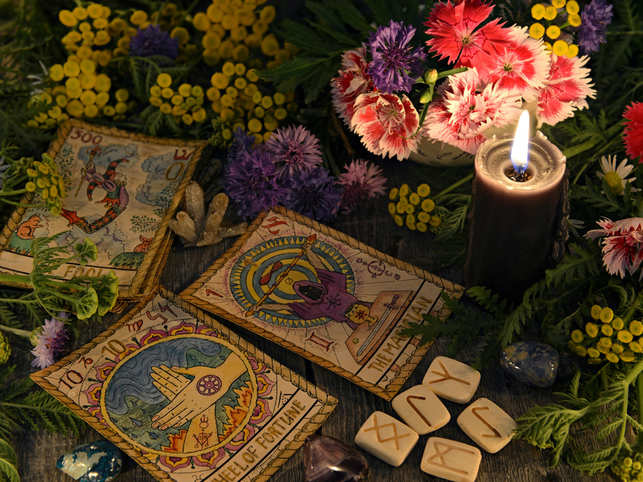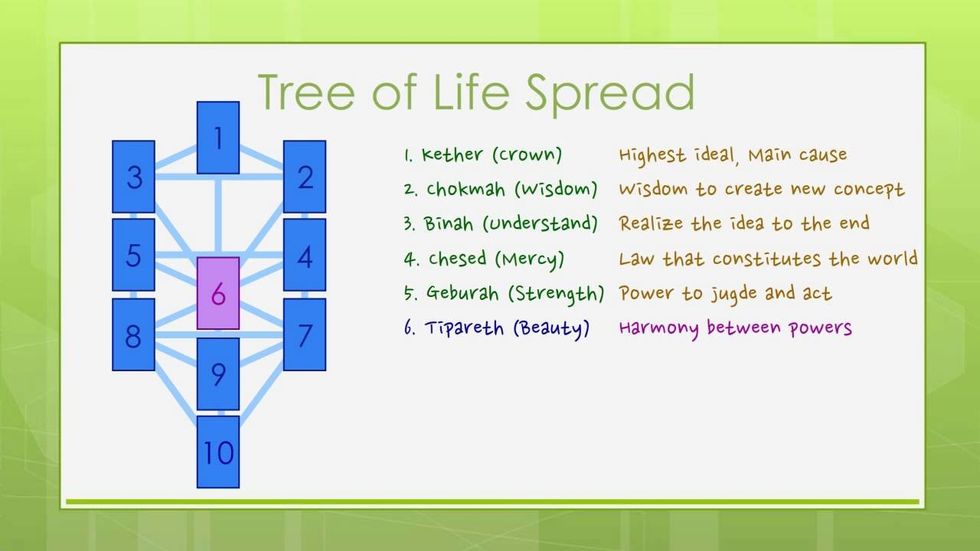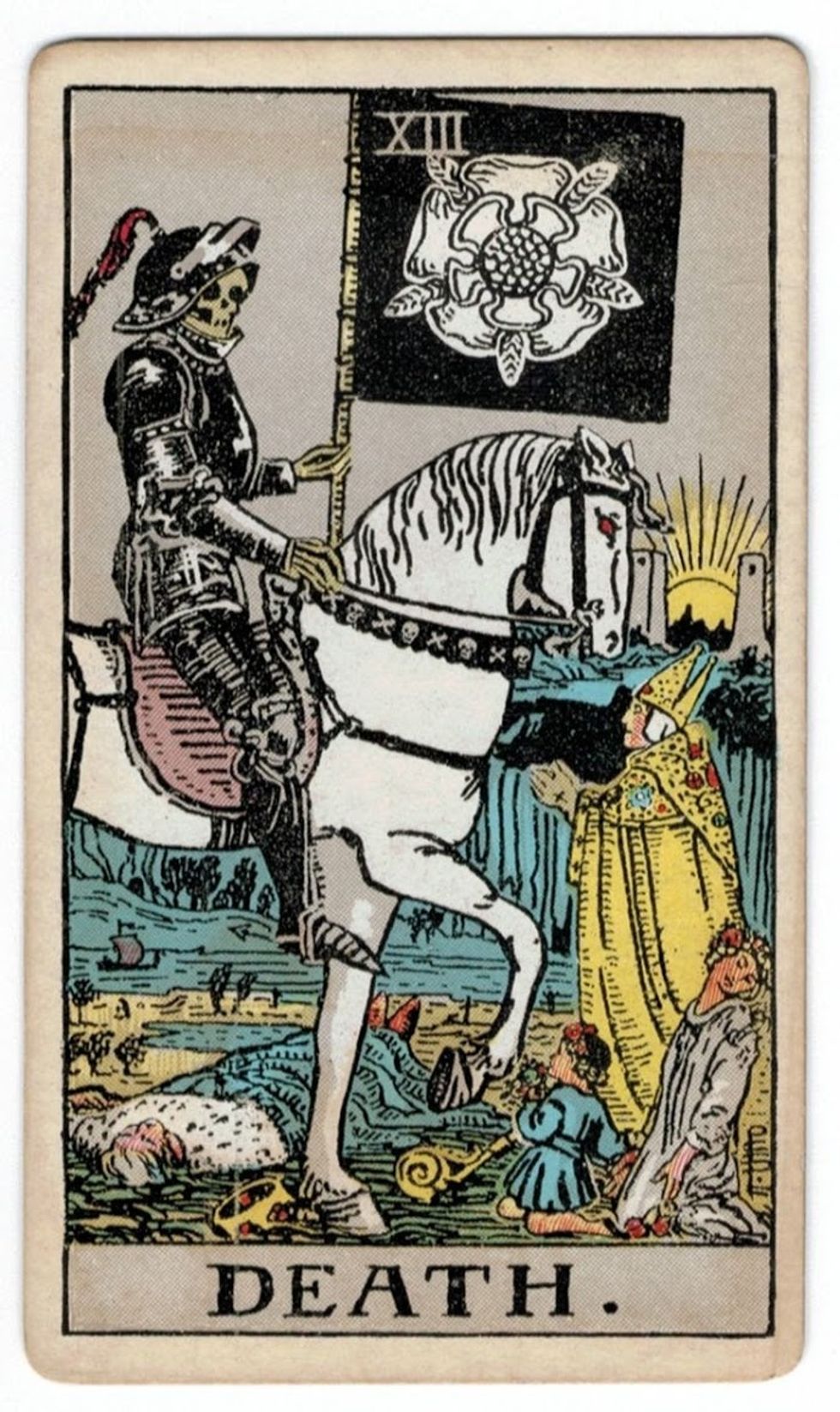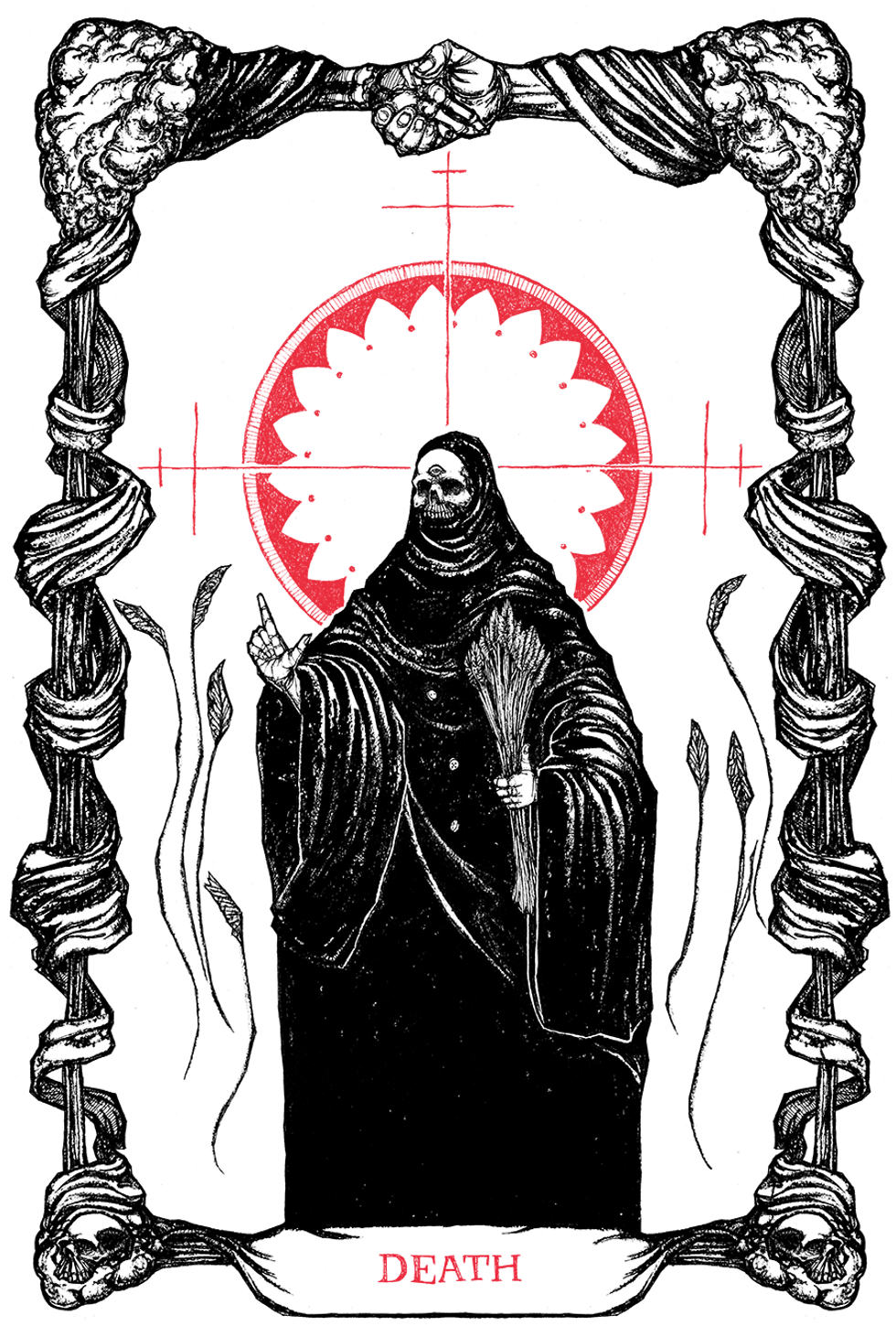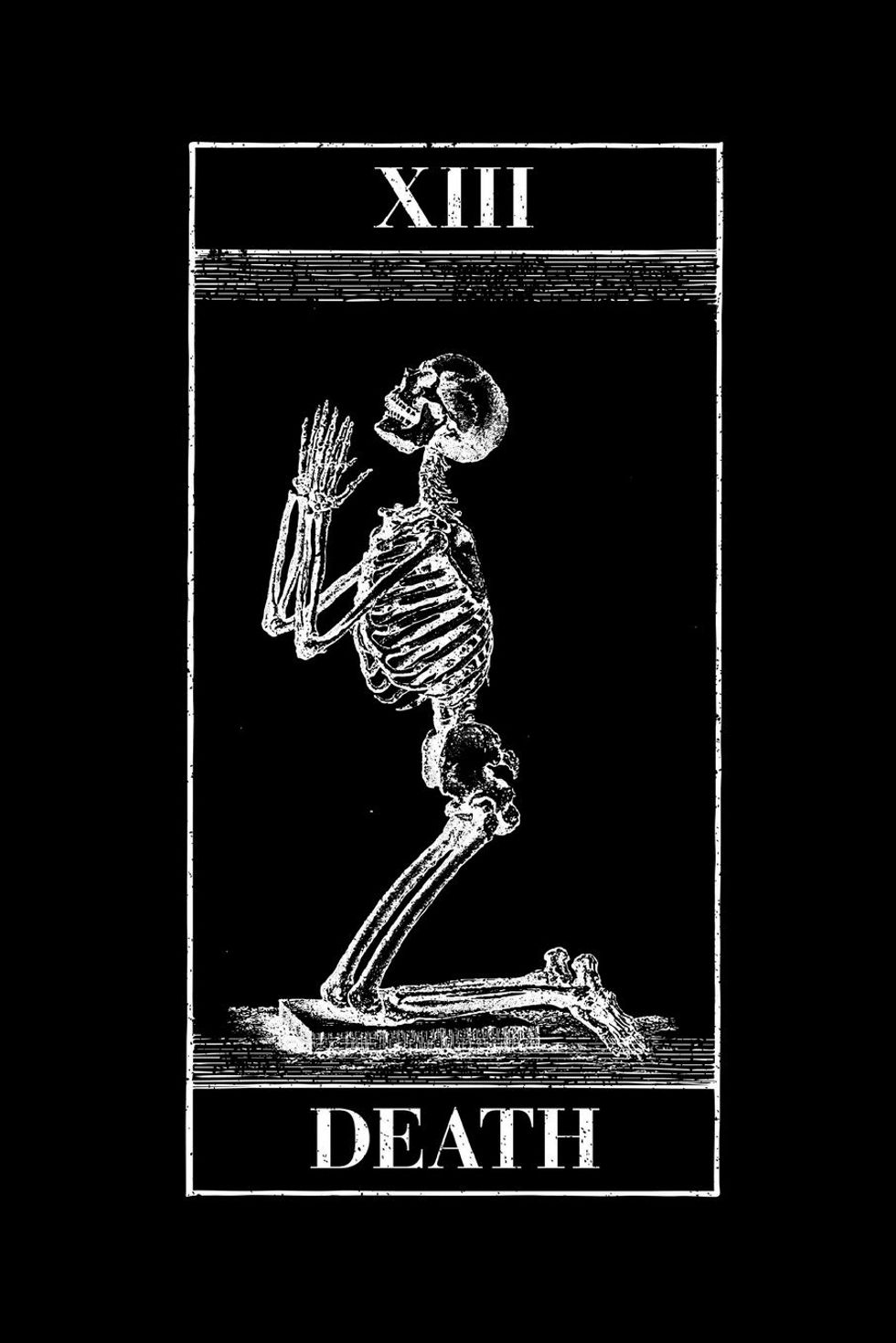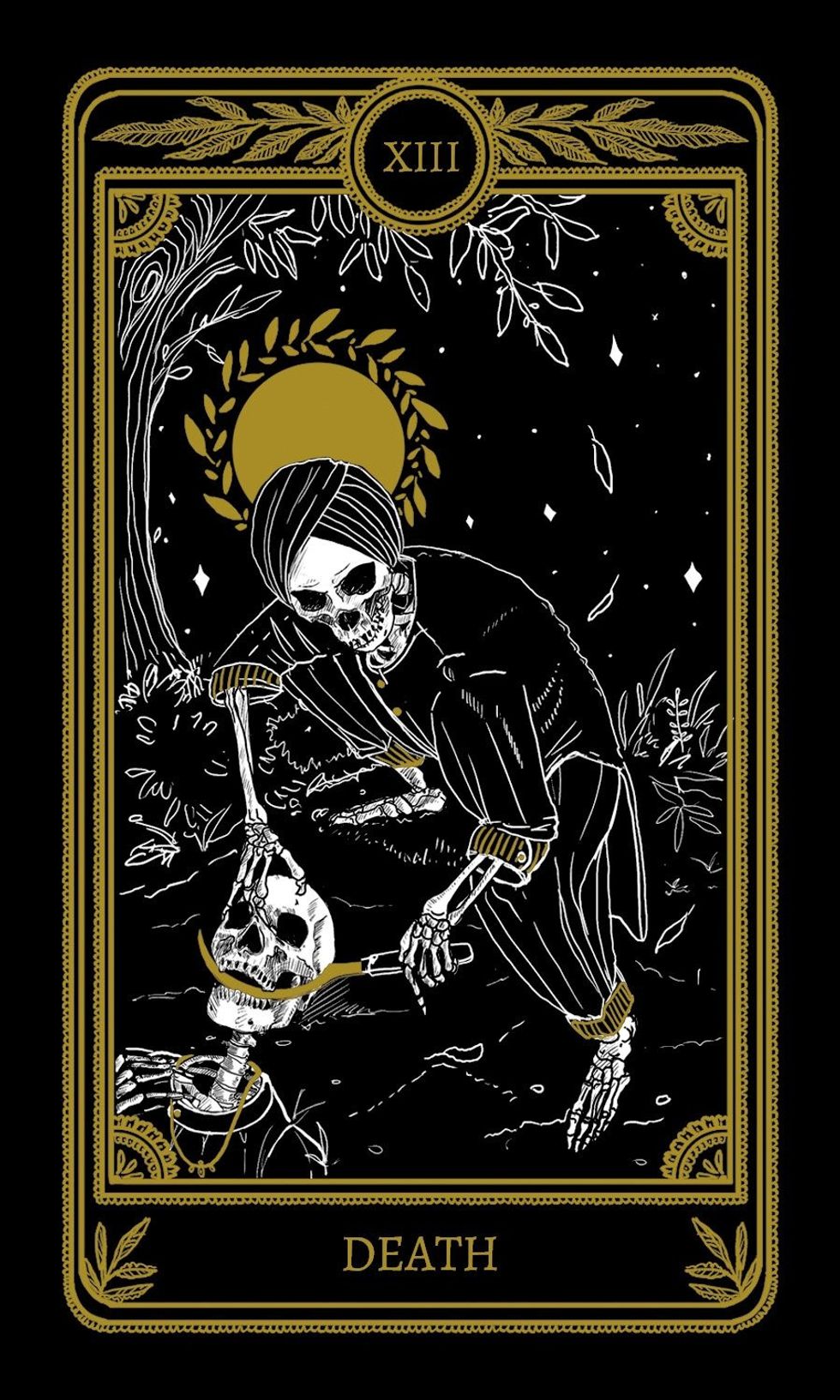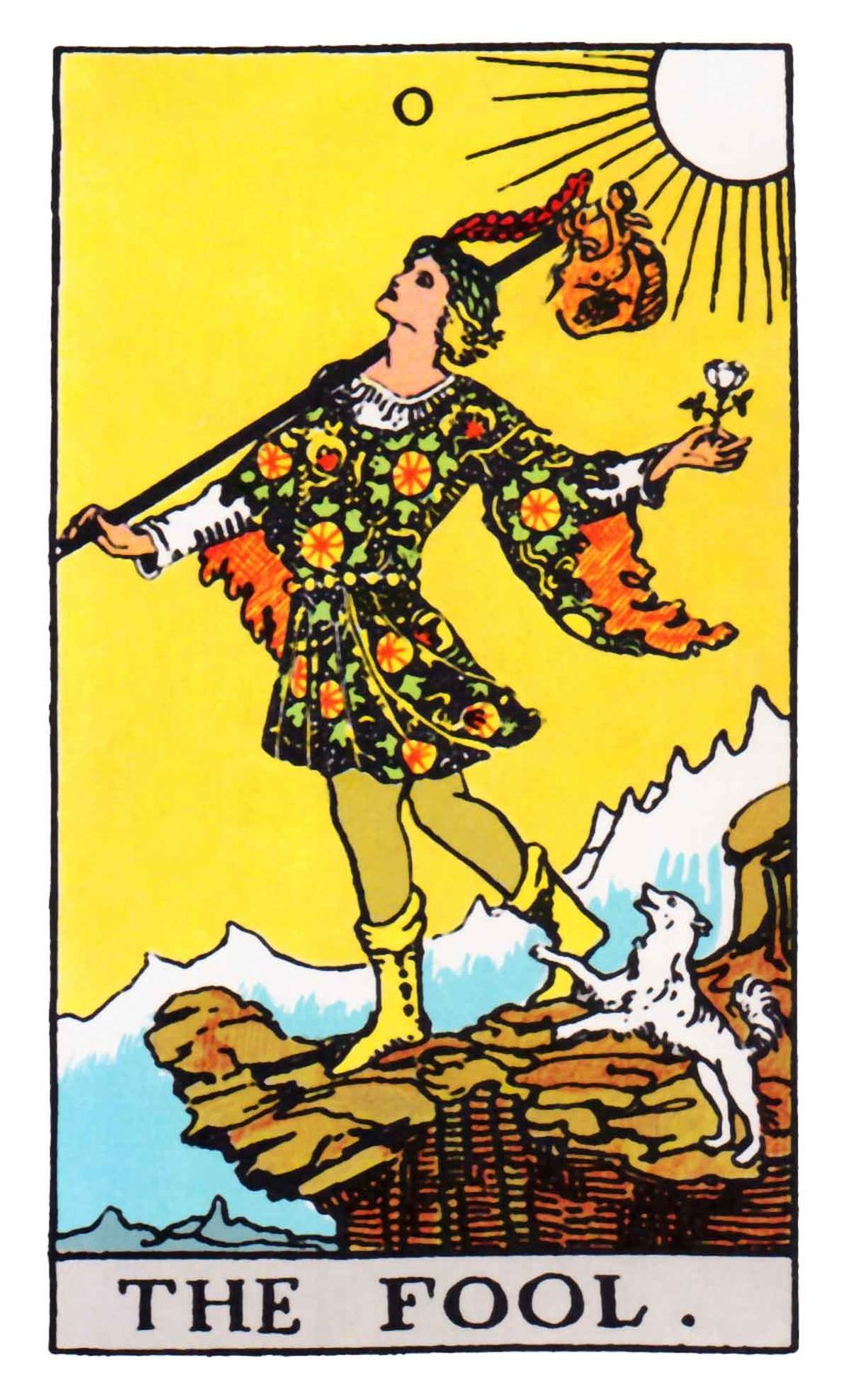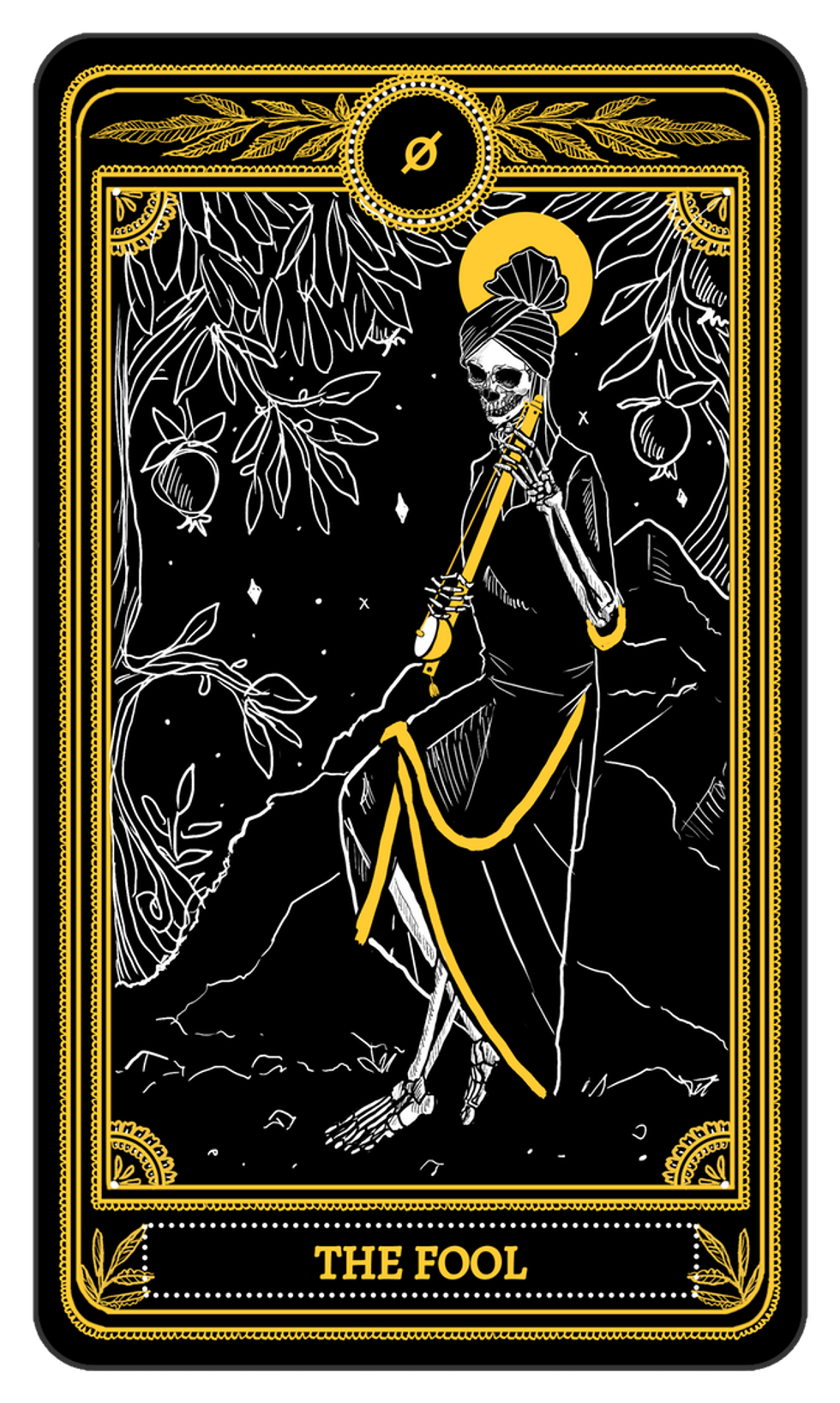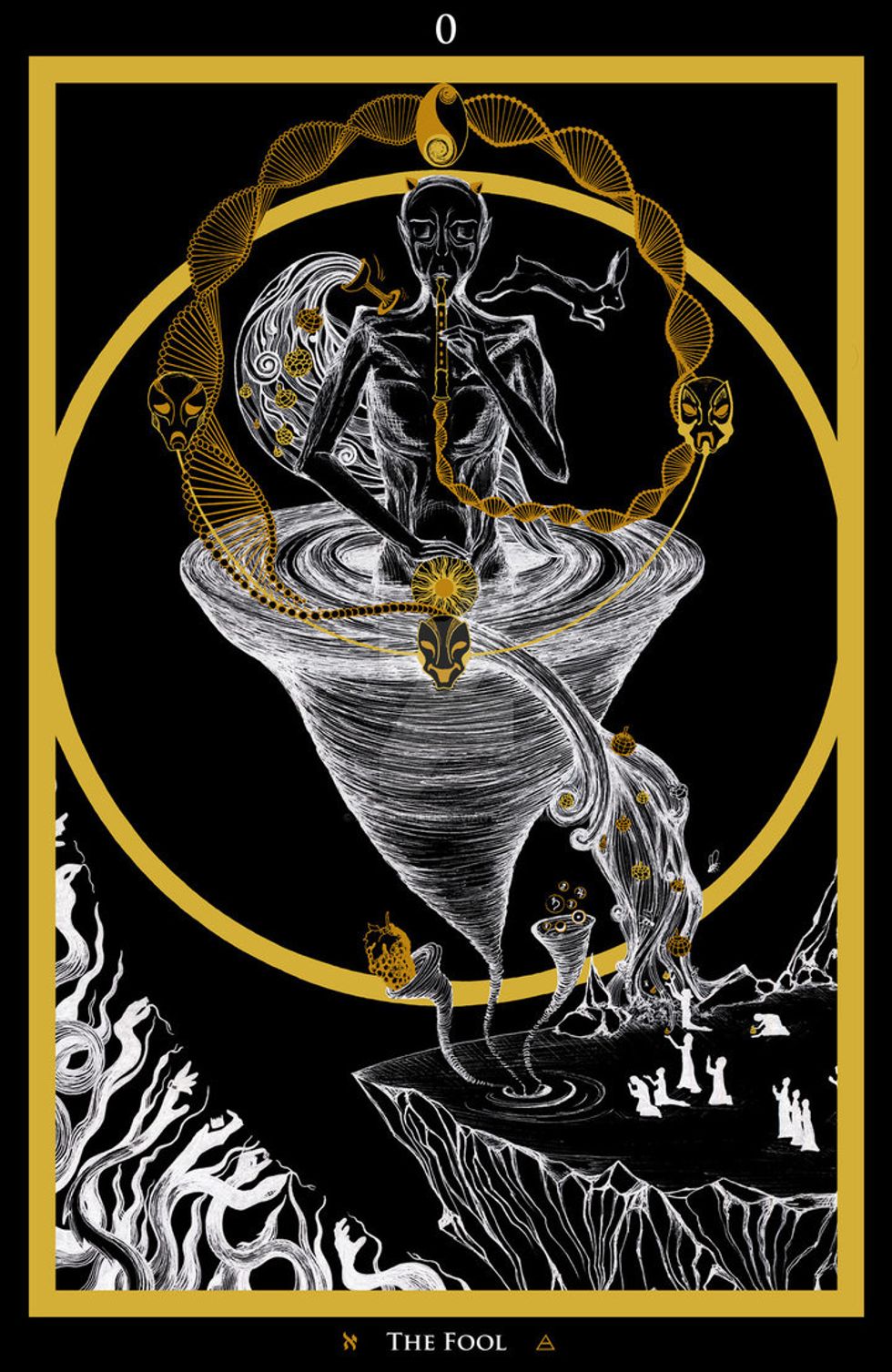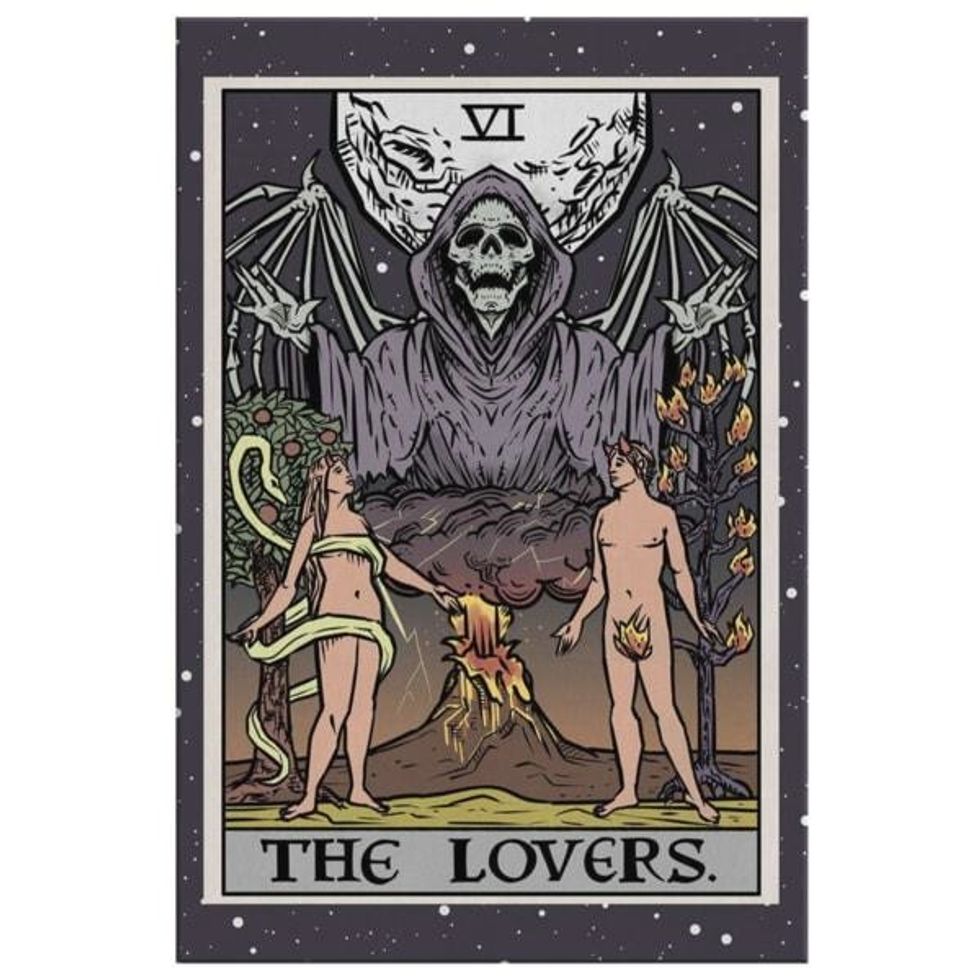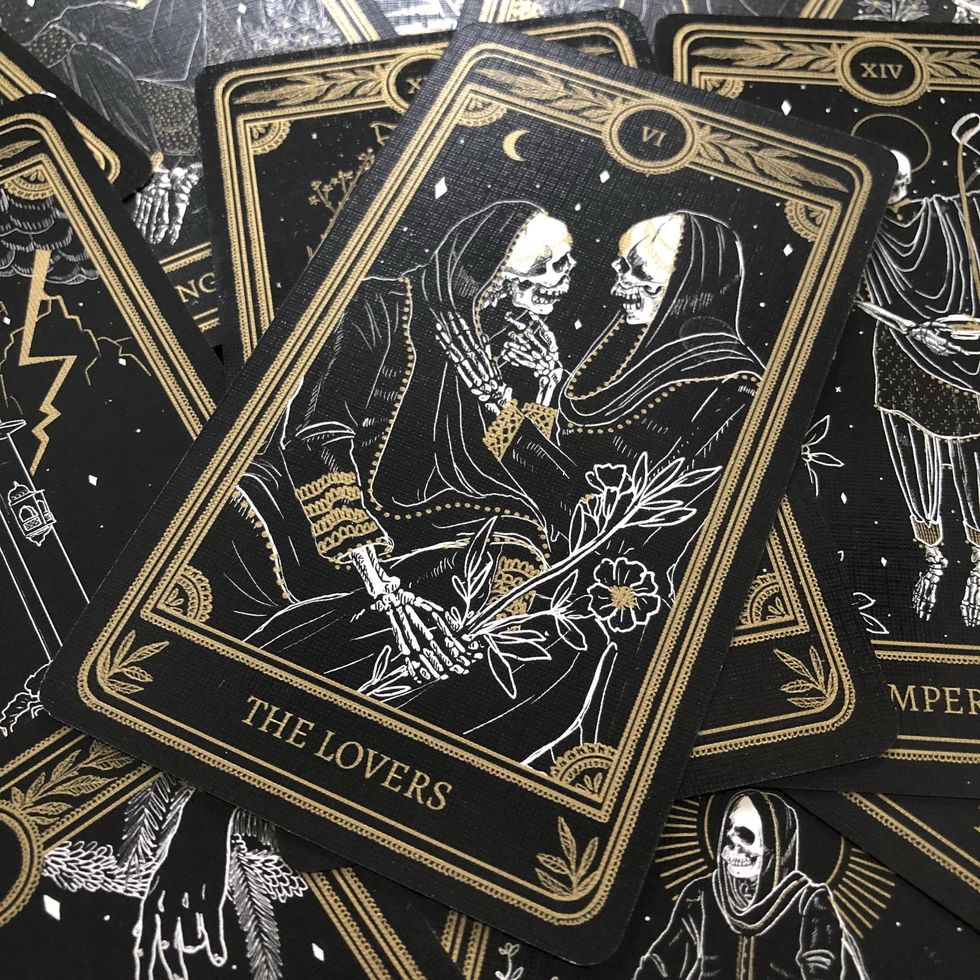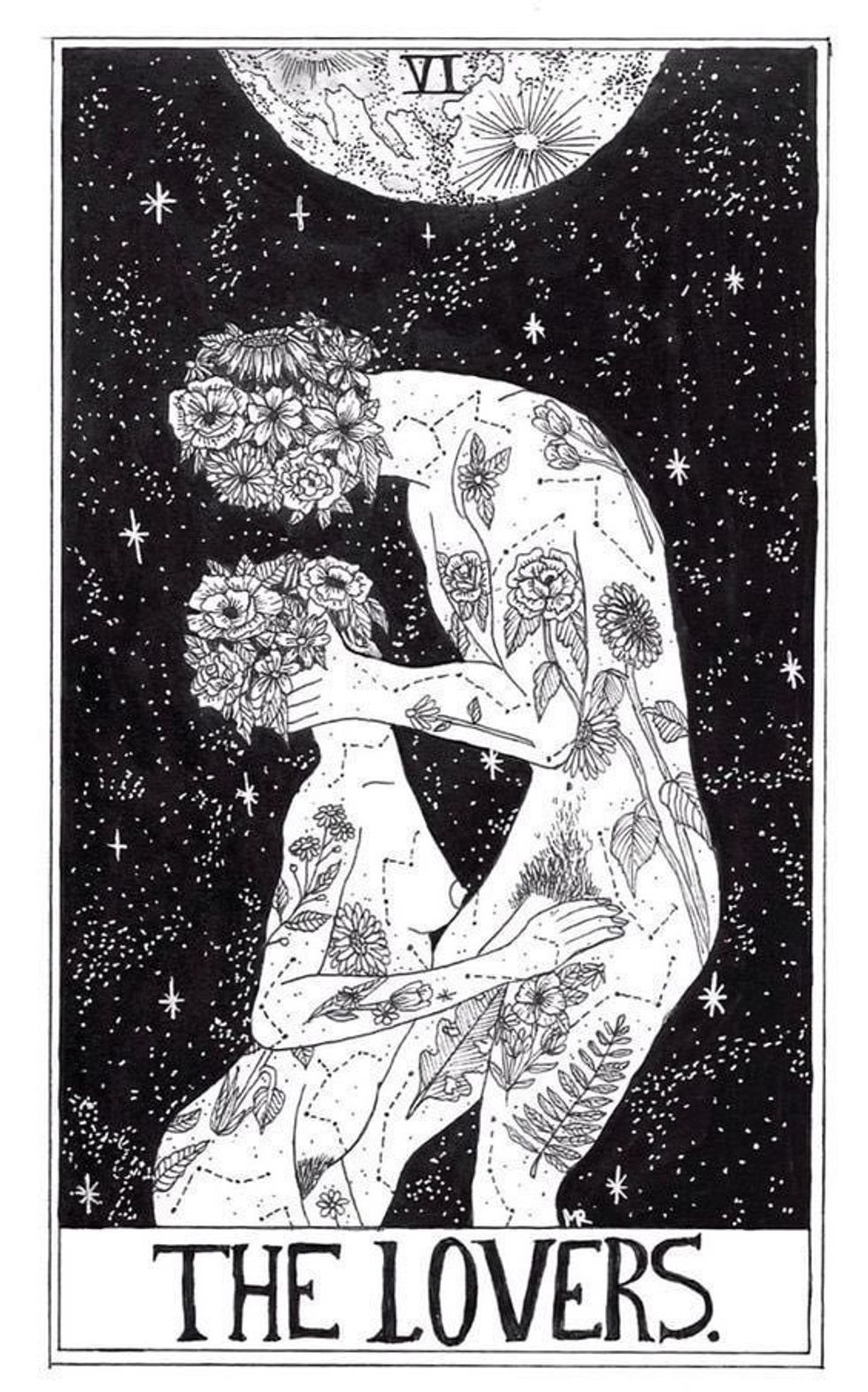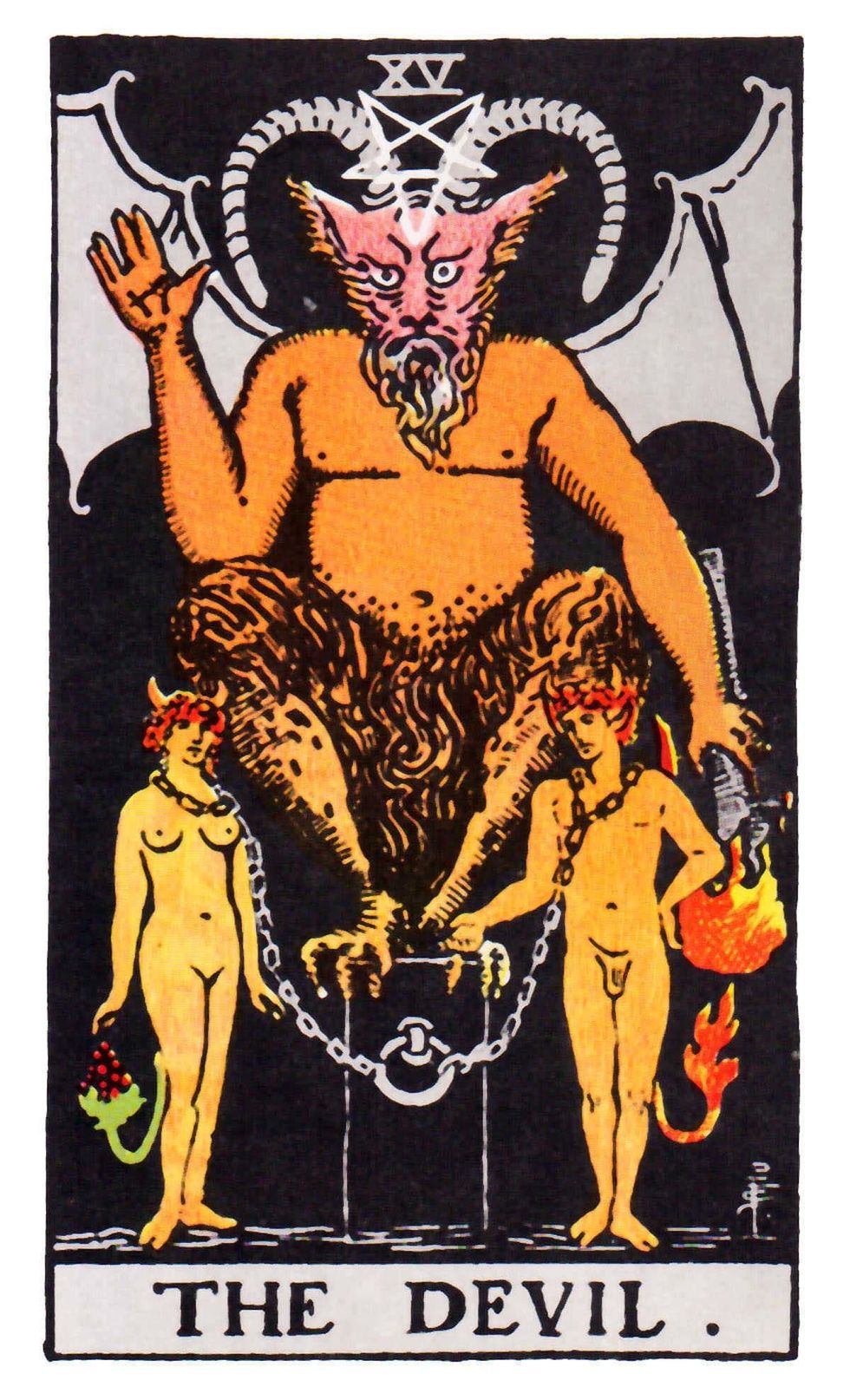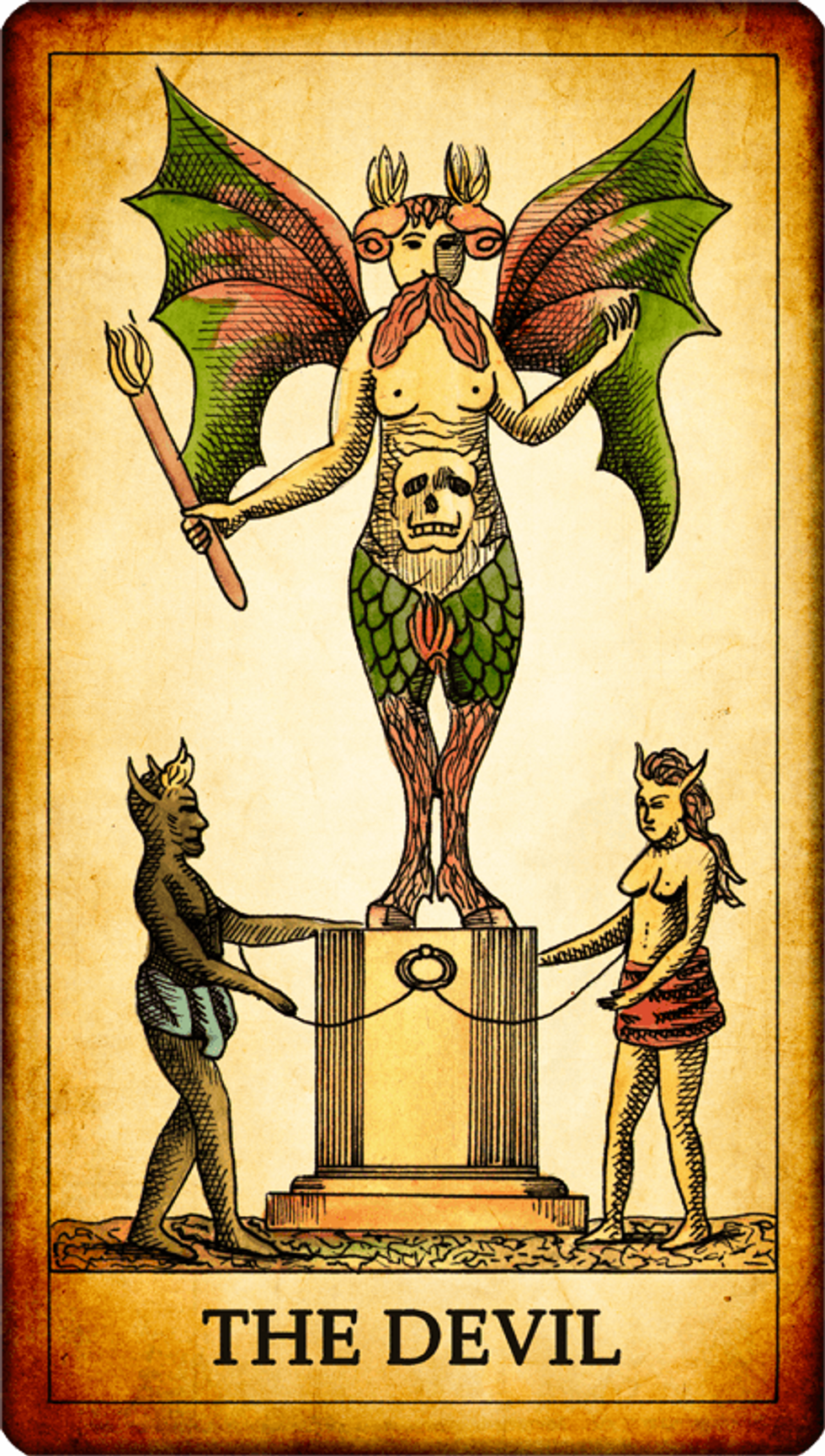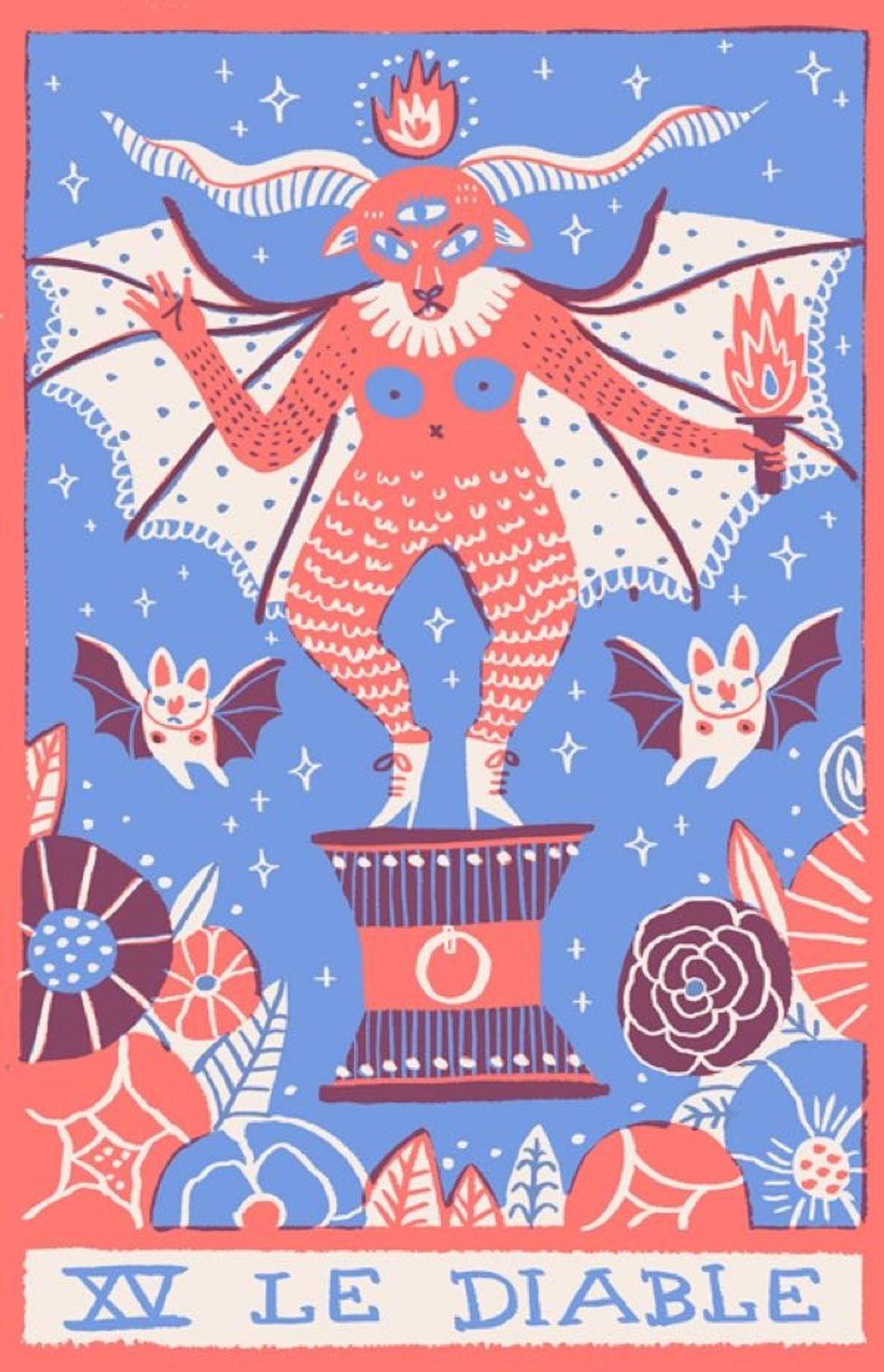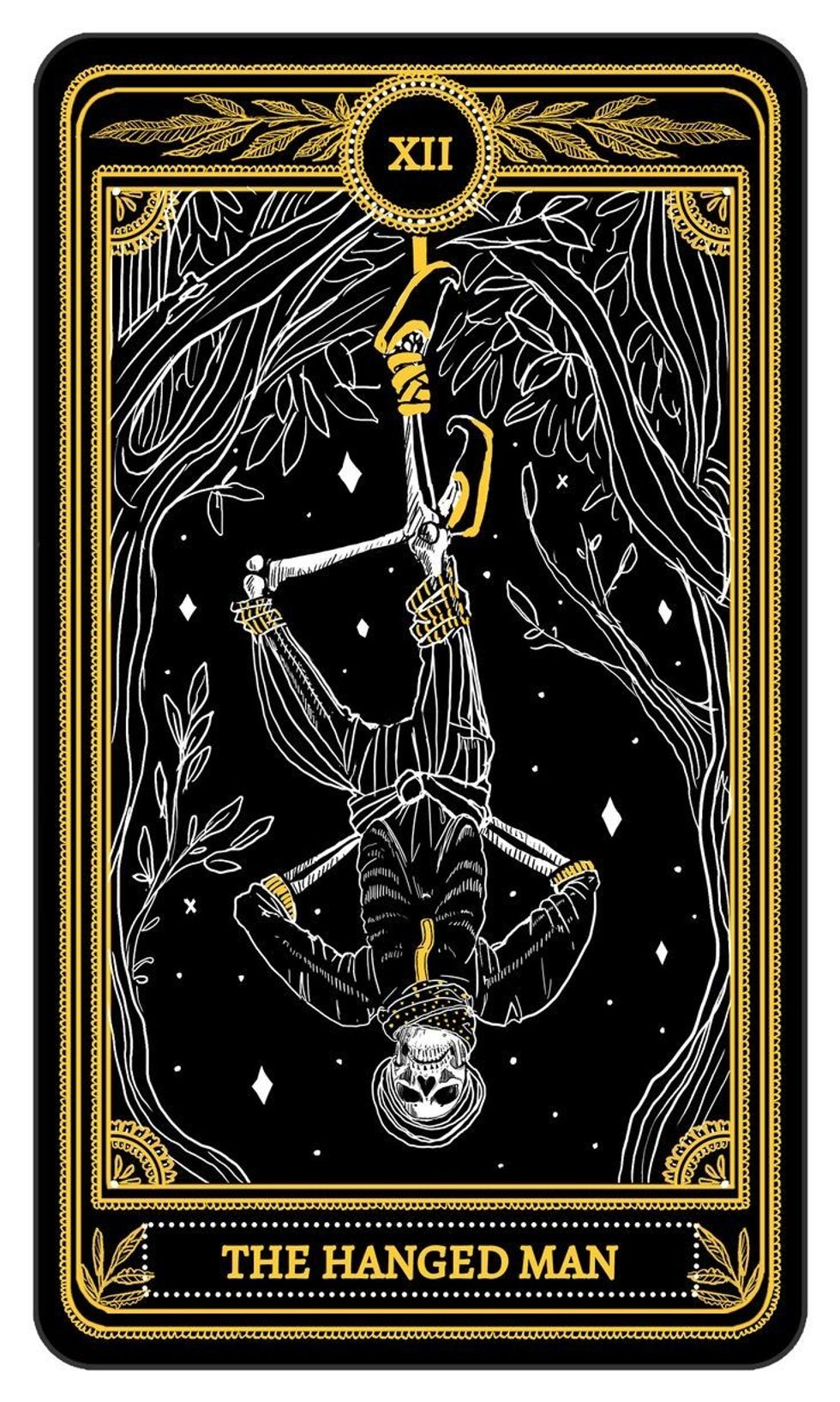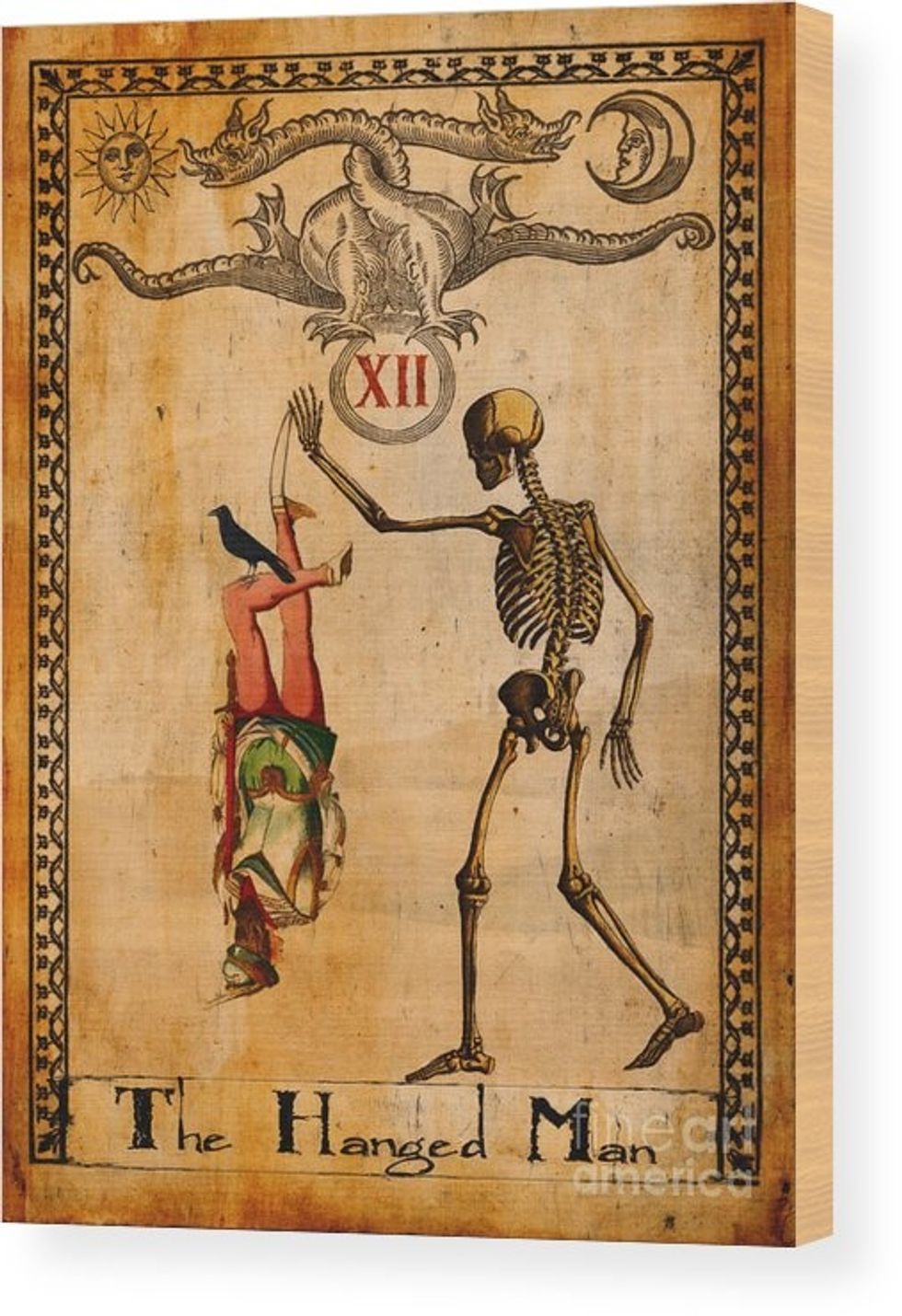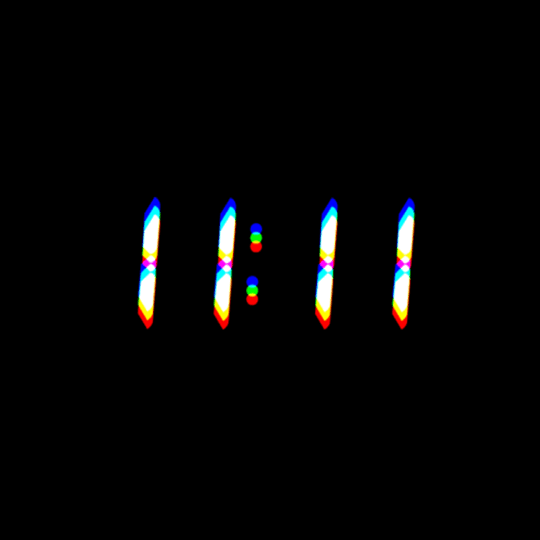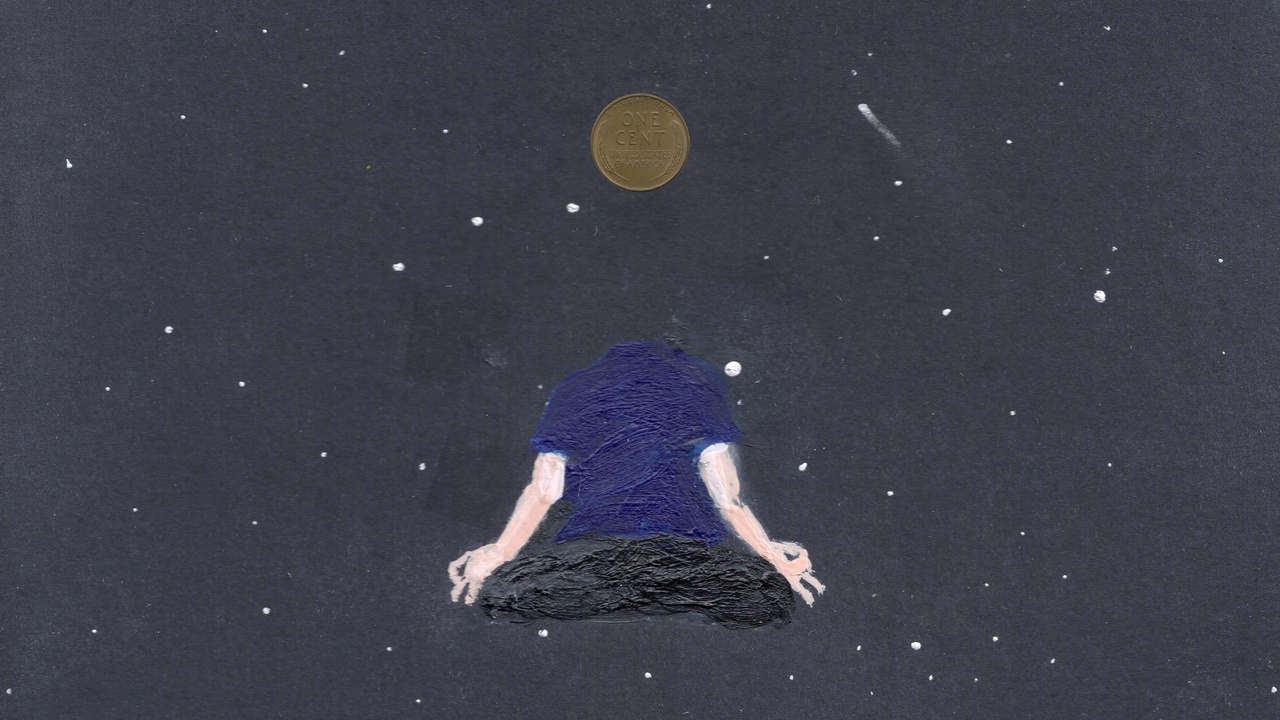Tarot cards might seem like New Agey tricks, but even if you don’t believe in anything remotely occult, these cards can provide a way to analyze, observe, and reflect on deep or repressed facets of your life and the world around you.
As we move into fall, they can also present excellent Halloween party entertainment.
You never know—by breaking out the tarot deck, you might be embarking on a journey towards discovering who you truly are. To help you out, here are some tips and tricks about understanding some of the most confusing cards, and some secrets that might help you understand the overarching mystery of the tarot.
A (Very) Brief History of the Tarot
The 22-card Major Arcana set consists of the following cards: The Magician, The High Priestess, The Empress, The Emperor, The Hierophant, The Lovers, The Chariot, Strength, The Hermit, Wheel of Fortune, Justice, The Hanged Man, Death, Temperance, The Devil, The Tower, The Star, The Moon, The Sun, Judgement, The World, and The Fool. The Minor Arcana consists of 44 cards, divided into 14 suits each.
Each one of these symbols has an ancient history and is rooted in archetypes that appear across cultures, faiths, and time. For example, most religious texts mention some kind of devil and some kind of magician, and sun and moon imagery has roots in pagan faiths. The more you learn about each of these archetypes, the more you’ll probably start seeing them cropping up in the world around you.
Famed psychologist Carl Jung believed that each of these archetypes touches upon a universal truth and is part of a story that every human being shares. He even went a little further, arguing that with the help of the tarot, “We can predict the future, when we know how the present moment evolved from the past.” He called the tarot “an intuitive method that has the purpose of understanding the flow of life, possibly even predicting future events, at all events lending itself to the reading of the conditions of the present moment.”
While this might seem like a leap, it’s not so far-fetched if you consider the tarot a method of “individuation,” or moving towards knowing one’s true self all the better. “The Tarot will teach you how to create a soul,” said the mystical thinker and filmmaker Alejandro Jodorowsky, and in truth, the tarot is just another way to bring you closer to your genuine values, to shake you out of your complicity, and to help you find your true purpose.
How to Do a Tarot Reading
In the simplest kind of tarot reading, you’ll shuffle your deck of cards, select three, and place them in a row in front of you. The left one will represent something about your past, the middle will reflect on the present, and the right will describe the future.
Alternatively, sometimes the left card can represent what’s happening in the physical realm, the middle one can symbolize the mental realm, and the third represents the spiritual realm and is often read as a message from the beyond. Sometimes, you’ll begin by selecting an extra card and placing it above the rest, and this will be your archetype, the lens you use to read all the other cards.
Of course, there are hundreds of different spreads.
Cards to Watch Out For
While analysis of each card type will vary depending on you and your reader, there are some common misconceptions that crop up around certain tarot cards. There are some cards that require extra attention, as they contradict our typical perceptions of reality, and in order to avoid leaving a reading with an unnecessary pit in your stomach, you’ll have to learn how to read them with care and nuance.
By developing a deeper understanding of what these cards mean, you’ll develop a deeper understanding of the secret wisdom at the heart of the tarot.
1. Death
Like your average Goth teenager, this card is one of the most misunderstood things in the world. While most people see death as an ominous card, it’s actually one of the most hopeful cards of the bunch.
In the tarot, death represents change and new beginnings. Though this change may not be easy, it can mark the ending of negative parts of the past. It indicates that it’s time to let go of things that are no longer working, to open yourself to spiritual transformation, and to avoid growing too dependent or attached to anything. It can mark the end of a dark night of the soul and the beginning of a new chapter, and it promises that you have a lot to look forward to. It’s also an indication to let go and surrender—to the changing seasons, to the full scope of emotions, and the core, primal parts of life.
When the Death card is reversed (AKA upside down), this can represent slowness and stagnancy, which possibly indicates that you’re resisting a necessary change. Either way, don’t fear that skeleton bearing his scythe. His appearance might be exactly what you need.
2. The Fool
While the word “fool” tends to have negative connotations in our vocabulary, the Fool archetype is quite similar to death, in that his presence can indicate new beginnings, and in that he’s also very easy to misinterpret.
Nothing could exist without The Fool’s decision to begin his journey, whatever that may be. The choice to begin something new, even if it’s misguided, needs to be made in order for anything to happen.
Typically, The Fool is given the number 0 in the tarot deck, because the Fool is present throughout all of life and has no rank or specific position. In many esoteric interpretations, the Fool is the protagonist, the person who experiences the path set out by the rest of the Major Arcana. Sometimes, The Fool is seen as a symbol of sacred wisdom, madness, or a combination of the two.
The Fool’s presence may indicate the start of a new adventure or the importance of a leap of faith. It might be telling you to start that business or make the change you’ve been fearing. It is one of the most valuable cards in the deck, so take heart if you see this jester with his little white dog.
However, a reversed Fool might indicate that you need to take some time meditating on your choices before leaping into them. That doesn’t mean don’t make the choice, though, as the Fool always moves forward into the fray: It just means you need to take a second to get your footing before you spread your wings.
3. The Lovers
Picking this card doesn’t necessarily mean that you’re in love, nor does it divine that you’re destined for matrimonial bliss. Instead, the image of these two intertwined lovers can indicate that you are torn about a relationship in some way, or you’re in the midst of another important decision.
It can also mean that you’re on your way towards harmony, finding a way to balance the polarizing forces within you. While The Fool can imply taking a leap of faith, The Lovers card might mean considering your options, honoring the divisions within yourself, and seeking guidance if necessary. In some interpretations, this card represents a need for communication and healing within a relationship or in yourself. It can also emphasize morality and harmony, or an unmet need for these things.
If the card is reversed, this can indicate that you’re plagued by some form of inner conflict, or you’re experiencing the fallout of a difficult decision. If this happens, know you need to honor and address the consequences of your actions.
Of course, The Lovers card can also mean that your love life and relationships are about to take a turn, for the better or for the worse.
4. The Devil
The Devil has been, at risk of obviousness, demonized for centuries—but what if Lucifer isn’t all he’s cracked up to be? That’s the message that this tarot card is sending us. In the context of the Major Arcana, The Devil usually represents carnal impulses and the extremities of lust and other emotions. It might indicate that you’ve been feeling powerless and at the mercy of intense emotions or forces beyond your control.
The Devil’s presence indicates that though you might feel out of control, you have the power to control your own destiny. It might mean that you need to get out of a bad relationship with someone or something, or you might need to get help for an issue you’ve been struggling to get a handle on, or you should exit a restrictive career or lifestyle.
The Devil doesn’t always mean that you need to go the way of renunciation. It might also mean that you have negative ideas, perhaps from childhood, about your sexuality or modes of expression, and you need to leave them behind in order to liberate yourself. You may be repressing your feminine or masculine aspects, suppressing your true desires or preferences, or using substances to hide how you really feel. It also might even mean you just need to relax.
The Devil reversed can mean that you’re on your way to breaking free of restrictive forces. If the Devil upright can represent being trapped, then The Devil reversed can indicate freedom or release, as well as liberation from delusion. As with all tarot cards, whatever you think The Devil means is most likely a reflection of what your subconscious knows it needs to do.
5. The Hanged Man
As with the Death card, The Hanged Man doesn’t mean you’re going to die. Instead, it signifies surrender, letting go, and release. Picking The Hanged Man might mean that you need to let Jesus take the wheel a little bit, throw your arms up and give yourself up to something greater than yourself. It could imply that you need to give away or release some of what you have pent up.
On the other hand, it could mean that you need to suspend judgment, stop trying to force something, or just let yourself wait it out. Whereas cards like The Magician and The Fool are all about change, The Hanged Man is about stillness, but it could also be about martyrdom or sacrifice. It might also indicate that you’re at a crossroads, and it’s OK to rest there for a while. It could mean letting go of a lover or making peace with the love that you’re in.
When reversed, The Hanged Man might indicate that you’re refusing to let go of something, or clinging to some preconceived notion or belief. It might imply that you’re being selfish or stubborn, or you’re hanging on to an expired relationship or hiding something from yourself. It might also mean that you’re feeling trapped and are having trouble internalizing lessons that you already know but are failing to put into practice. It might imply that you’re at a crossroads and that change is on its way, or you need to make peace with all the not-knowing.
Starting to see how the tarot works?
No card has a fixed interpretation, and they mean something different for every person. Their meanings might also evolve as cultures change and values shift, but each is meant to evoke some primal instinct or deep-rooted question within you. People who believe in the tarot believe that when we interpret the spread, we dip into a well of subconscious wisdom that we cannot usually access.
Learning about tarot cards is actually quite similar to learning about the subliminal forces at the core of human psychology. The more you know about the primal symbols and forces that have always been pulling our strings behind the scenes, the more you’ll understand the secret forces that motivate your actions and shape your world.
After all, we shape our worlds with our minds (or, to be less humanistic, our minds are not separate from the world), and though most of us go around blindly accepting preconceived understandings of ourselves and our place in the universe, esoterics and sages have been screaming that truth at us for ages. This is all a complicated and roundabout way to say that tarot cards can basically mean whatever you want them to mean, and that’s beautiful.

